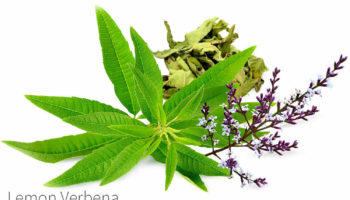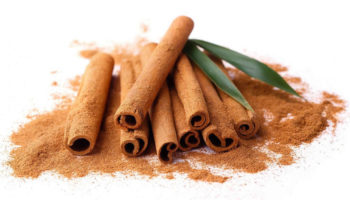Contents
What is cedarwood essential oil
Cedarwood oil, is an essential oil derived from various types of conifers, most in the pine or cypress botanical families. In the US, cedarwood oil is produced from the foliage, and sometimes the wood, roots, and stumps of Juniperus virginiana trees, which have been left after cutting of trees for timber extraction 1. Although termed cedarwood oils, the most important oils of this group are produced from distilling wood of a number of different junipers/cypresses (Juniperus and Cupressus spp.), rather than true cedars (Cedrus spp.) 2. Similar oils are distilled, pressed or chemically extracted in small quantities from wood, roots, and leaves from plants of the genera Platycladus, Cupressus, Taiwania, and Calocedrus.
Cedarwood oil alcohols and terpenes are listed as synthetic flavoring substances and adjuvants that are permitted by the United States Food and Drug Administration (21 CFR, § 172.515) for direct addition to food for human consumption. Cedarwood oil was registered as a pesticide in the United States in 1960. Currently, cedarwood oil is listed as a minimum risk pesticide and exempted from the Federal Insecticide, Fungicide, and Rodenticide Act regulations (40 CFR, § 152.25). Cedarwood oil is listed in the Toxic Substances Control Act Inventory 3. However, no limits on recommended or permissible exposures are available.
Cedarwood oils can be extracted from several members of the Cupressaceae family, which encompasses true cedars, junipers, and cypresses. The three most prevalent cedarwood oil products in the United States are Virginia cedarwood oil (Juniperus virginiana), Texas cedarwood oil (Juniperus mexicana or Juniperus ashei), and Western red cedar (Thuja plicata) 4. Western red cedar is the least commonly used of the three.
Cedarwood oil Synonyms 5
- Cedar oil
- Cedarwood oil virginia
- Cedrus atlantica oil
- HSDB 1972
- Oil cedar
- Oil of cedar wood
- Oil of cedarwood
- Red cedarwood oil
Table 1. Plant sources of cedarwood oil
| Family Pinaceae | |
| Cedrus deodara (Roxb.) Loud. C. atlantica Manetti; | Himalayan cedarwood, deodar Atlas cedarwood |
| Family Cupressaceae | |
| Cupressus funebris Endl. | Chinese cedarwood |
| Juniperus virginiana L. | Virginia cedarwood, Eastern red cedar |
| J. mexicana Schiede [correct name said by ADAMS (1987) to be J. ashei Buch.] | Texas cedarwood |
| J. procera Hochst | East African cedarwood |
| Widdringtonia whytei Rendle | Mulanje cedarwood |
Note: Cupressus funebris is commonly stated to be the source of Chinese cedarwood oil but one Chinese source indicates that Juniperus chinensis, J. formosana and J. vulgaris are also used.
[Source 2]Most of the cedarwood oils are obtained from wild trees but little information is published on the extent to which oil production may have affected the natural resource. In Kenya, there has been a serious depletion of the wild trees as a result of over-exploitation for timber and oil. The position in China is not known. American oil production utilizes waste wood from trees felled for timber as well as the considerable areas where the junipers grow as invasive “weeds”.
Cedarwood oils each have characteristic woody odours which may change somewhat in the course of drying out. The crude oils are often yellowish or even darker in colour and some, such as Texas cedarwood oil, are quite viscous and deposit crystals on standing. They find use (sometimes after rectification) in a range of fragrance applications such as soap perfumes, household sprays, floor polishes and insecticides. Small quantities are used in microscope work as a clearing oil.
All the cedarwood oils of commerce contain a group of chemically related compounds, the relative proportions of these depending on the plant species from which the oil is obtained. These compounds include cedrol and cedrene, and while they contribute something to the odour of the whole oil they are also valuable to the chemical industry for conversion to other derivatives with fragrance applications. The oils are therefore used both directly and as sources of chemical isolates.
In India, Cedrus deodara oil has been shown to possess insecticidal and antifungal properties and to have some potential for control of fungal deterioration of spices during storage. However, its commercial use for this purpose remains, at present, speculation.
Excluding China, for which the magnitude of consumption of domestically produced cedarwood oil is not known, the United States, Western Europe and Japan are the major markets for the oil. After processing, the derivatives that are produced and their formulated products have a more diverse range of markets.
The USA utilizes much of its own Texas and Virginia cedarwood oils but also imports significant quantities of Chinese oil.
In Europe, demand for oil is mainly of the Chinese type.
Cedarwood oil chemical and physical properties
The most common components of cedarwood oils are sesquiterpene hydrocarbons and include cedrol, α-cedrene, cedrenol, cedral, cuparene, thujopsene, and widdrol, though the relative percentages can differ depending on the origin of the cedar trees 6. The International Organization for Standardization set the following minimum and maximum standards for the components that make up the chromatographic profile of cedarwood oil (from Juniperus virginiana): α-cedrene (20% to 35%), β-cedrene (4% to 8%), thujopsene (10% to 25%), cuparene (1.5% to 7%), cedrol (16% to 25%), and widdrol (2% to 5%) 7.
Cedarwood oil is a colorless to pale brown viscous liquid with a cedarwood odor and bitter taste. It is insoluble in water but soluble in ethanol or ether and may solidify at room temperature.
Virginia cedarwood oil is extracted from Juniperus virginiana trees by steam distillation. Cedarwood oil of unspecified origin is used commonly in fragrance formulations, and production for this purpose exceeds 100,000 pounds per year. Several cedarwood oil components can be isolated and acetylated for use in fragrances. Of the chemical components that make up cedarwood oil, cedrene, thujopsene, and cedrol are commonly isolated and often acetylated in the production of fragrance materials such as cedryl acetate and cedryl methylether. These extracts can be found in many cosmetic products (i.e., perfumes, lotions) that may be applied to most parts of the body and may come into contact with the ocular and nasal mucosae. Frequent application of these products on a daily basis leads to long-term chronic exposure. The cosmetics industry no longer reports concentration of use values to the United States Food and Drug Administration. However, data submitted to the FDA indicated that the maximum use concentration ranges from the 1984 product formulation data for Juniper Extract and Juniper Tar in cosmetics were 0.1% to 1%, and 1% to 5%, respectively.
Cedarwood oil uses
Cedarwood oil is commonly found in fragrance formulations. Cedrene, thujopsene, and cedrol are cedarwood oil components that are commonly isolated and often acetylated in the production of fragrance materials such as cedryl acetate and cedryl methylether 8. These extracts can be found in many cosmetic products (i.e., perfumes, lotions, soaps) that are often applied to most parts of the body, and may come into contact with the ocular and nasal mucosae. Frequent application of these products on a daily basis leads to long-term chronic dermal and inhalation exposure. In addition to its use as a fragrance ingredient, cedarwood oil alcohols and terpenes have been used as food additives for flavor enhancement or adjuvants and are considered by the United States Food and Drug Administration (FDA) to be generally safe as a food additive preservative 9, 10. The use of cedarwood oil terpenes as food additives in 1987 was estimated to be 166,500 pounds 11. Cedarwood oil is used as a pesticide in sunscreens, pet collars, and in animal bedding 12. Cedarwood oil has also been investigated as a topical mosquito repellent as an alternative to DEET; however, it was found to be ineffective against the multiple mosquito species that were tested 13. However, it was found to be effective with an average knock-down range of 20% to 80% when applied directly to mosquitoes, cockroaches, and houseflies 14. Virginia cedarwood oil was also found to be effective as a barrier repellent to red imported fire ants and black-legged tick nymphs 15. Additionally, it is used in blocks and as a liquid spray for repelling moths and mildew from clothing and fabrics 16. In vitro, Japanese cedarwood oils have been found to have anti-fungal properties against Trichophyton rubrum through the inhibition of DNA polymerase 17.
Cedarwood essential oil toxicity and side effects
Animal studies testing the potential for skin irritation and sensitivity following acute exposure to low concentrations of cedarwood oil have resulted in conflicting data 18, 19. The majority of these studies did not find sensitization or irritancy, but a few have shown that in rabbits, topical application of full strength (undiluted) cedarwood oil for 24 hours resulted in moderate skin irritation 18. In humans, several short-term studies (24 hours to 4 days) have shown limited skin irritation effects following topical application of cedarwood oil at concentrations ranging from 0.2% to 20% 20, 21, 22. Acetyl cedrene, a common constituent of cedarwood oil, was also reported to have limited toxicity when evaluated in human irritation tests at concentrations up to 30% 23.
Disposition studies in rats with α-cedrene, a component of cedarwood oil, resulted in slow absorption with a Tmax between 2.8 and 4.4 hours following oral gavage dosing 24. In female rats, Cmax and AUC values increased proportionally to the dose and α-cedrene was extensively distributed to tissues with tissue:plasma ratios greater than 1 for all tissues; the highest ratio was present in lipid 24. The oral LD50 (lethal dose sufficient to kill 50 percent of a population of animals usually within a certain time, also called median lethal dose) value for cedarwood oil is greater than 5 g/kg body weight in rats, and the dermal LD50 (lethal dose sufficient to kill 50 percent of a population of animals usually within a certain time, also called median lethal dose) in rabbits is also greater than 5 g/kg 18.
Due to the widespread and increasing human exposure to cedarwood oil and lack of overall toxicological information, the National Cancer Institute nominated cedarwood oil for toxicity studies by the National Toxicology Program 25, 4. To address the lack of toxicological information following cedarwood oil exposure, 3-month dermal studies in male and female F344/N rats and B6C3F1/N mice were conducted. The concentrations used in these studies resulted in extensive skin lesions with no No-Observed-Effect-Level (NOEL) achieved in either the mice or the rats 4. Benchmark dose modeling was performed to put these skin lesions, in addition to the final mean body weights, into perspective for risk assessment applications. However, due to the maximum effect level achieved for skin lesions in the mice at the lowest applied concentration, benchmark dose modeling of the skin lesions could only be performed in the rats. Groups of 10 male and 10 female mice and rats were administered 0% (untreated control), 0% (vehicle control), 6.25%, 12.5%, 25%, 50%, or 100% cedarwood oil in 95% ethanol by dermal application for 13 weeks 1. All of the rats survived until the end of the study, with the exception of two males in the 100% group that were euthanized due to severe skin lesions. All of the male and female mice in the 100% group were euthanized at week 10 of exposure as a result of the severity of skin lesions at the site of application. This was followed by euthanasia of one male and one female in the 50% group in week 11 and one male in the 12.5% group in week 12. All other male and female mice survived until the end of the study. In both rats and mice, treatment related clinical observations in the skin at the site of application included dermal irritation, thickened skin, and ulceration. These findings were noted in most of the male rats at applied concentrations of 25% or more, in most of the female rats at applied concentrations of 12.5% or more, and in the majority of the mice at all applied concentrations. Skin lesions were first noted on day 8 of cedarwood oil application in both rats and mice in the highest dose group. Treatment-related gross lesions were observed mainly in the skin at the site of application in the majority of the rats and mice, and included irritation, thickened skin, and ulceration 1. The time to first incidence decreased, while incidence and severity of epidermal ulcers increased with increasing dose in male and female rats and mice. Ulcerations presented earlier and were more severe in both sexes of the mice at all the doses tested (6.25% and above) 1 when compared to rats, where ulcerations were noted in both sexes at doses of 12.5% and greater, albeit with lower incidences and severities than what was seen in the mice 1.
In direct response to the inflammation and ulcerations at the site of cedarwood oil application, there were also histopathological changes in the hematopoietic system (bone marrow, spleen, and regional lymph nodes) that was most prominent in mice 1. The increased occurrences of these hematopoietic system lesions were considered to be secondary to the lesions observed in the skin at the site of application. Increased liver and kidney weights and increased incidences of kidney non-neoplastic lesions were also observed following dermal cedarwood oil exposure. Exposure-related decreases in absolute and relative thymus weights of rats and mice were also seen, with the male mice also displaying thymocyte depletion in the cortex of the thymus. The thymus is the most sensitive of the lymphoid organs in response to stress 26 and the thymus effects observed in these studies are consistent with stress-related organ effects. These additional organ weight changes and lesions are discussed more extensively within the National Toxicology Program’s Toxicity Report for Cedarwood Oil discussion 27. However, these data indicate that in addition to the site of application, there was a systemic inflammatory response to the skin lesions and the kidney and liver could also be potential targets for topical cedarwood oil exposure.
The final mean body weights of the 100% male and female rats were significantly less than those of the respective control groups at the end of the study (13% and 10% less, respectively) 1. Additionally, the mean body weight gain of the male rats from the 25% group was significantly less than the vehicle control group. In the mice, the final mean body weights of the 25% and 50% male dose groups (10% and 14% less, respectively) and the 12.5%, 25%, and 50% female dose groups (12%, 19%, and 13% less, respectively) were significantly less than the vehicle control groups. This also corresponded to decreased mean body weight gains in comparison to the controls, in both the male and female mice at doses of 12.5% and above 1.
However, the Food and Drug Administration (FDA) no longer requires the cosmetics industry to report concentration of use values on cosmetic product labels; however, 1984 product formulation data indicate that the maximum use concentrations for Juniper extract and Juniper tar in cosmetics were 0.1 to 1% and 1 to 5%, respectively 28. Although these reported data are not current, these levels appear to be consistent with products that have been identified as currently available on the market (e.g., an insect repellant product marketed as all natural that contains 1.5% cedarwood oil). Given the reported data and what is available on the market, the benchmark doses at the lower 95% confidence limits levels determined for cedarwood oil in the toxicological studies overlap with those that were permitted for use in cosmetics 1.
In conclusion, dermal application of cedarwood oil for three months resulted in exposure-related skin lesions in both sexes of rats and mice 1. Skin irritation resulted in a systemic inflammatory response that was mild in the rats in the higher dose groups and more pronounced in the mice in nearly all the dose groups, reflecting the increased severities of the skin lesions in the mice. Benchmark doses modeling of these skin lesions in the rats resulted in the lower benchmark doses at 95% confidence limits levels for cedarwood oil that overlap with previously reported use levels and indicate concern for human exposure. Sensitization is a key early event in the development of allergic contact dermatitis and is a parameter currently used in both hazard and risk assessments 1.
- Catlin NR, Herbert R, Janardhan K, et al. Dose-response assessment of the dermal toxicity of Virginia Cedarwood Oil in F344/N rats and B6C3F1/N mice. Food and chemical toxicology : an international journal published for the British Industrial Biological Research Association. 2016;98(Pt B):159-168. doi:10.1016/j.fct.2016.10.016. https://www.ncbi.nlm.nih.gov/pmc/articles/PMC5123962/[↩][↩][↩][↩][↩][↩][↩][↩][↩][↩][↩]
- CEDARWOOD OILS. http://www.fao.org/docrep/V5350e/V5350e12.htm[↩][↩]
- United States Environmental Protection Agency. https://www.epa.gov/[↩]
- https://ntp.niehs.nih.gov/ntp/htdocs/st_rpts/tox086_508.pdf[↩][↩][↩]
- https://chem.nlm.nih.gov/chemidplus/rn/8000-27-9[↩]
- Merory, J. (1968). Food Flavorings: Composition, Manufacture, and Use, 2nd ed. AVI Publishing Company, Inc., Westport, CT.[↩]
- International Organization for Standardization (ISO) (2004). Oil of cedarwood, Virginian (Juniperus virginiana L.). ISO 4724:2004€. Prepared by Technical Committee ISO/TC54, Essential Oils.[↩]
- Ullmann’s Encyclopedia of Industrial Chemistry . In: 5th ed. Gerhartz W, editor. VCH Publishers; Deerfield Beach, FL.: 1985. p. 220.[↩]
- CEDARWOOD OIL TERPENES. https://www.accessdata.fda.gov/scripts/fcn/fcndetailnavigation.cfm?rpt=eafuslisting&id=361[↩]
- CEDARWOOD OIL ALCOHOLS. https://www.accessdata.fda.gov/scripts/fcn/fcndetailnavigation.cfm?rpt=eafuslisting&id=360[↩]
- United States Environmental Protection Agency (USEPA) Reregistration Eligibility Decision (RED) Cedarwood Oil. US Environmental Protection Agency; Washington, DC: 1993. p. 169. EPA 738-S-93-012.[↩]
- United States Environmental Protection Agency. https://www3.epa.gov/pesticides/chem_search/reg_actions/reregistration/fs_PC-040505_1-Sep-93.pdf[↩]
- Repellency of essential oils to mosquitoes (Diptera: Culicidae). Barnard DR. J Med Entomol. 1999 Sep; 36(5):625-9. https://www.ncbi.nlm.nih.gov/pubmed/10534958/[↩]
- Singh, D., Rao, S.M., and Tripathi, A.K. (1984). Cedarwood oil as a potential insecticidal agent against mosquitoes. Naturwissenschaften 71, 265-266.[↩]
- Eller, F.J., Vander Meer, R.K., Behle, R.W., Flor-Weiler, L.B., and Palmquist, D.E. (2014). Bioactivity of cedarwood oil and cedrol against arthropod pests. Environ. Entomol. 43, 762-766.[↩]
- United States Environmental Protection Agency (USEPA) (2009).[↩]
- Takao, Y., Kuriyama, I., Yamada, T., Mizoguchi, H., Yoshida, H., and Mizushina, Y. (2012). Antifungal properties of Japanese cedar essential oil from waste wood chips made from used sake barrels. Mol. Med. Rep. 5, 1163-1168.[↩]
- Research Institute for Fragrance Materials (RIFM) Fragrance Raw Materials Monographs: Cedarwood Oil Virginia. Food Cosmet. Toxicol. 1974;12:845–846.[↩][↩][↩]
- Chronic toxicity of essential oils and certain other products of natural origin. Roe FJ, Field WE. Food Cosmet Toxicol. 1965 Aug; 3(2):311-23. https://www.ncbi.nlm.nih.gov/pubmed/5859246/[↩]
- Patch testing with fragrances: results of a multicenter study of the European Environmental and Contact Dermatitis Research Group with 48 frequently used constituents of perfumes. Frosch PJ, Pilz B, Andersen KE, Burrows D, Camarasa JG, Dooms-Goossens A, Ducombs G, Fuchs T, Hannuksela M, Lachapelle JM. Contact Dermatitis. 1995 Nov; 33(5):333-42. https://www.ncbi.nlm.nih.gov/pubmed/8565489/[↩]
- Fujii T, Furukawa S, Suzuki S. Studies on compounded perfumes for toilet goods. On the non-irritative compounded perfumes for soaps [in Japanese, English abstract]. Yukagaku. 1972;21:904–908.[↩]
- Contact sensitivity to flavourings and perfumes in atopic dermatitis. Abifadel R, Mortureux P, Perromat M, Ducombs G, Taieb A. Contact Dermatitis. 1992 Jul; 27(1):43-6. https://www.ncbi.nlm.nih.gov/pubmed/1424590/[↩]
- A toxicological and dermatological assessment of alkyl cyclic ketones when used as fragrance ingredients. RIFM Expert Panel. Belsito D, Bickers D, Bruze M, Calow P, Dagli ML, Fryer AD, Greim H, Miyachi Y, Saurat JH, Sipes IG. Food Chem Toxicol. 2013 Dec; 62 Suppl 1():S1-44. https://www.ncbi.nlm.nih.gov/pubmed/24246175/[↩]
- In vivo absorption and disposition of α-cedrene, a sesquiterpene constituent of cedarwood oil, in female and male rats. Kim TH, Yoo SD, Lee HS, Lee KM, Seok SH, Kim MG, Jung BH, Kim MG, Shin BS. Drug Metab Pharmacokinet. 2015 Apr; 30(2):168-73. https://www.ncbi.nlm.nih.gov/pubmed/25857232/[↩][↩]
- https://ntp.niehs.nih.gov/results/pubs/shortterm/reports/abstracts/tox086/index.html[↩]
- Interpreting stress responses during routine toxicity studies: a review of the biology, impact, and assessment. Everds NE, Snyder PW, Bailey KL, Bolon B, Creasy DM, Foley GL, Rosol TJ, Sellers T. Toxicol Pathol. 2013; 41(4):560-614. https://www.ncbi.nlm.nih.gov/pubmed/23475558/[↩]
- National Toxicology Program (NTP) Toxicity Report Series No. 86. National Institutes of Health, Public Health Service, U.S. Department of Health and Human Services; Research Triangle Park, NC: 2016. Toxicity Studies of Virginia Cedarwood Oil (Virginia) in F344/N Rats and B6C3F1/N Mice (Dermal Study). NIH Publication[↩]
- Final report on the safety assessment of Juniperus communis Extract, Juniperus oxycedrus Extract, Juniperus oxycedrus Tar, Juniperus phoenicea extract, and Juniperus virginiana Extract. Int J Toxicol. 2001; 20 Suppl 2():41-56. https://www.ncbi.nlm.nih.gov/pubmed/11558640/[↩]





